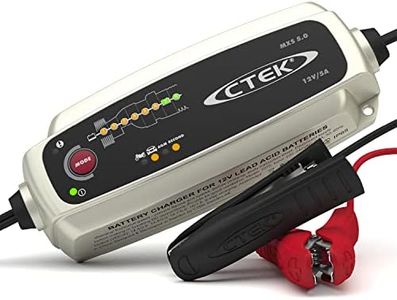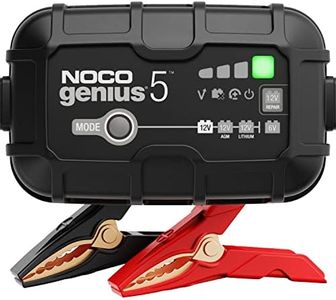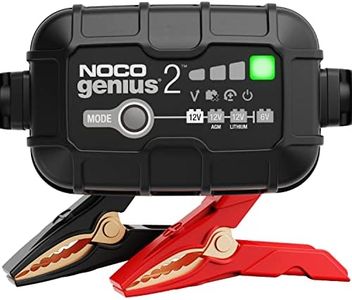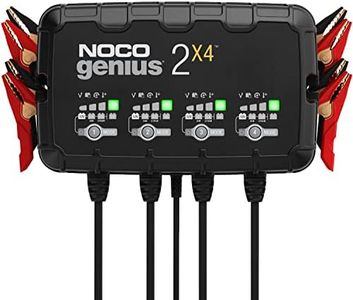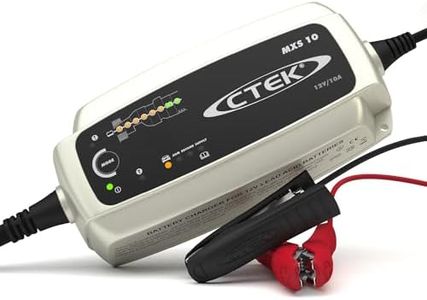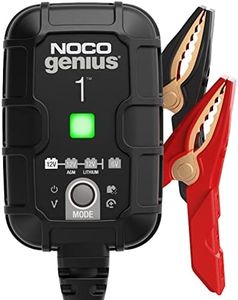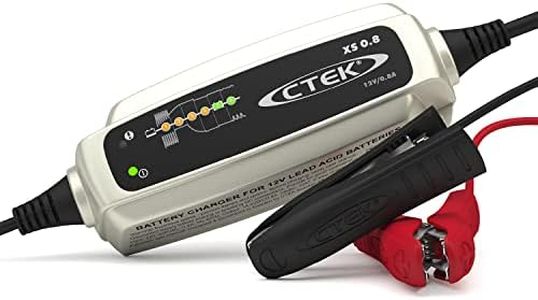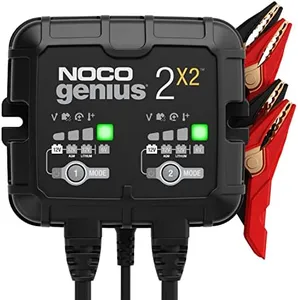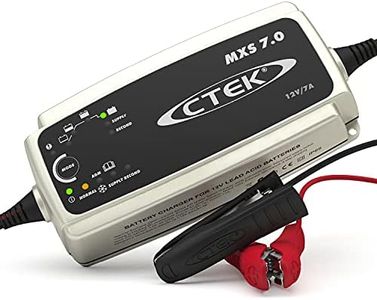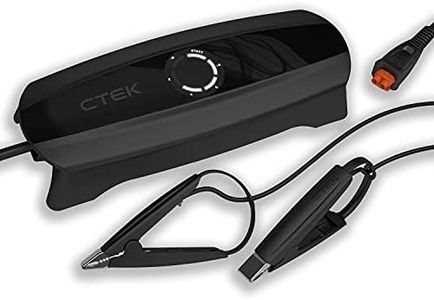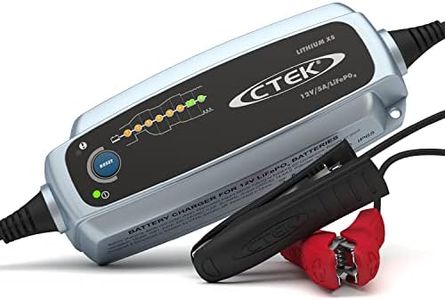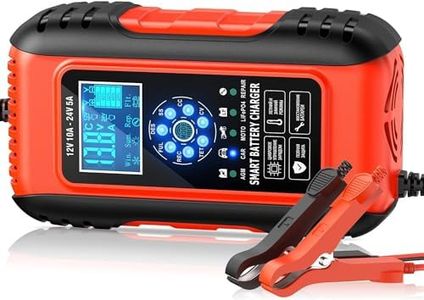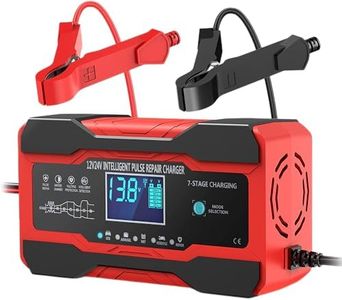We Use CookiesWe use cookies to enhance the security, performance,
functionality and for analytical and promotional activities. By continuing to browse this site you
are agreeing to our privacy policy
10 Best Motorcycle Battery Chargers
From leading brands and best sellers available on the web.By clicking on a link to a third party's website, log data is shared with that third party.
Buying Guide for the Best Motorcycle Battery Chargers
Choosing the right motorcycle battery charger is essential for keeping your bike ready to start and prolonging the life of your battery. With many types and features available, it’s important to match your charger to your bike’s battery type and your typical usage. Think about how often you ride, where you store your motorcycle, and whether you need basic charging or extra features like maintenance or diagnostics. Understanding key charger specs will help you make an educated decision.Type of ChargerThe type of charger refers to the way it charges your battery. The main types are manual, trickle, and smart (automatic/maintenance). Manual chargers require you to monitor and disconnect them to avoid overcharging, so they're better suited for experienced users. Trickle chargers provide a constant low current, which can be useful for long-term maintenance but may risk overcharging if left unattended for too long. Smart chargers automatically adjust their output, switching to a maintenance mode once the battery is full, making them the safest and most convenient for most users. If you want hassle-free charging, a smart or maintenance charger is usually best, especially if you store your motorcycle over winter or don't ride daily.
Output VoltageMost motorcycle batteries are 12V, but some smaller bikes and scooters may use 6V batteries. The output voltage of the charger must match your battery’s voltage, or you risk damaging your battery or failing to charge it properly. Chargers designed for both 6V and 12V give you flexibility if you own multiple types of vehicles. Always check your motorcycle battery’s label or manual to confirm the correct voltage before choosing a charger.
Charging Current (Amperage)This spec tells you how quickly your charger can supply power to the battery, usually measured in amps (A). Lower current (0.5A – 1.5A) chargers are ideal for small batteries and for slow, safe charging, making them great for motorcycle batteries which can be sensitive to higher currents. Higher current chargers (2A – 5A or more) charge batteries faster but can generate more heat and may not be suitable for all battery types or sizes. If you need to top up a battery quickly, a higher amp charger helps, but for long-term battery health and maintenance, a lower amp charger is generally safer and sufficient.
Battery CompatibilityMotorcycle batteries come in different types, such as lead-acid, AGM (absorbed glass mat), gel, and lithium-ion. Not all chargers are compatible with every battery type. Make sure the charger you choose explicitly supports your specific battery. Many modern chargers are multi-chemistry and will work with several types, but double-check compatibility to avoid damaging your battery or voiding warranties. Your motorcycle’s manual or the battery label will indicate the type of battery you have.
Safety FeaturesGood chargers offer features like automatic shut-off, reverse polarity protection (if you connect the clamps the wrong way), spark-proof connectors, and overcharging prevention. These features ensure that the charging process is safe for you and your motorcycle, reducing the risk of electrical accidents or battery damage. If you’re not experienced with battery maintenance, prioritize chargers with these built-in protections.
Size and PortabilityThe physical size and weight of the charger can matter if you plan to carry it with you on trips or need to store it in a small garage or shed. Compact chargers are easy to store and transport, making them convenient for travel or for use in limited spaces. If your main goal is at-home charging in a fixed spot, larger models can be acceptable.
Additional FeaturesSome chargers come with extra functions such as battery testing, desulfation (removal of lead sulfate crystals from battery plates), reconditioning, or even jump-start capabilities. These features can be helpful if you want to keep track of your battery's overall health or need to revive an old or deeply discharged battery. Decide if these extras are necessary based on how you maintain your motorcycle and the condition of your battery.
